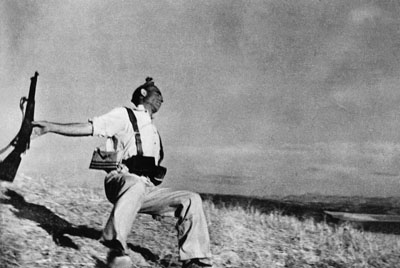
Robert Capa © International Center of Photography/Magnum Photos
Frontline
Robert Capa » Henri Cartier-Bresson » Thomas Dworzak » Alex Majoli » Dominic Nahr » George Rodger » Moises Saman » David (Chim) Seymour » Peter van Agtmael »
Exhibition: 24 Sep 2011 – 8 Jan 2012
NRW-Forum Kultur und Wirtschaft
Ehrenhof 2
40479 Düsseldorf
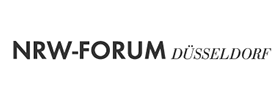
NRW-Forum Düsseldorf
Ehrenhof 2
40479 Düsseldorf
+49 (0)211-8926690
museum@nrw-forum.de
www.nrw-forum.de
Tue-Sun 11-18, Fri 11-22
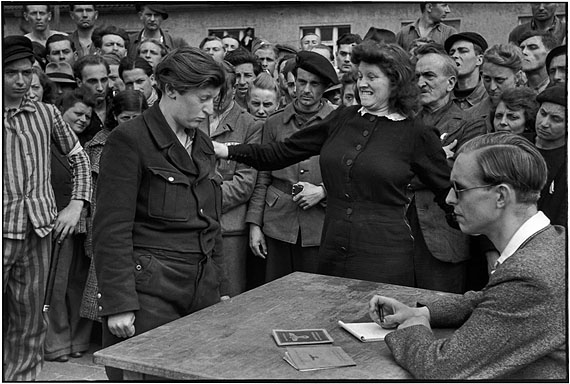
Frontline
24 September 2011 to 8 January 2012
This photo is one of the most iconic photos in the world and is etched deeply in people's memories: a soldier, his arms thrown backwards as he falls, his rifle sliding out of his grasp, has just been hit by the bullet that will end his life. In this photo, which is entitled 'Death of a Loyalist Militiaman' and was taken during the Spanish Civil War in 1936, the photographer Robert Capa captures the quintessence of all wars. One could say that this photo and the photos subsequently taken by Robert Capa and the triumvirate of George Rodger, Henri Cartier-Bresson, and David Seymour both during this war and on the horrifying battle-fields and in the places of desperation of the Second World War mark the start of war reporting through photography.
In her 2003 book Regarding the Pain of Others, Susan Sontag, who was critical of war photography in her early essays, revised her previous opinion that people become immune when exposed to pictures of violence and war. She also emphasised the ability of such photographs to make an appeal: 'The image says "put an end to this; intervene, take action". This is the decisive, the correct reaction.' Sontag also went on to describe war photography as a 'common language for suffering and disaster.' Because of a succession of larger and smaller conflicts and wars around the world, we are all too familiar with this language. Moreover, with the disturbing images of the so-called 'Arabellion', it is a language that has recently once again become a standard feature on the title pages of major daily newspapers and magazines around the world.
Once again, this raises the question as to whether photos can end wars and crises, can be a wake-up call to the international public. The 'Frontline' exhibition would like to address this question using the work of nine photographers from the world famous Magnum photo agency.
The afore-mentioned photo of the Spanish loyalist by Robert Capa is one of 200 photographs included in the exhibition. The photos in the NRW-Forum's 'Frontline' exhibition range from the war photos taken by Magnum founders Robert Capa, George Rodger, Henri Cartier-Bresson, and David Seymour, many of which are now considered historic and have often been called icons of photography, to those taken by the young generation of Magnum photographers: Thomas Dworzak, Dominic Nahr, Moises Saman, Peter van Agtmael, and Alex Majoli. These young photographers take photos at the hot spots of today's world, provide up-to-the-minute photos of the revolts against oppressive regimes in the countries of the Arab world, and are already on their way to new fronts.
Magnum Photos was founded by Capa, Cartier-Bresson, Rodger, and Seymour in 1947. By establishing their own photo agency, the four photographers opened up a new chapter in the history of photojournalism. This was the first time photographers had joined forces to set up an agency in order to produce, control, and market their own work with a view to ensuring themselves a degree of independence from the media.
Their prestige was that they were the most successful war photographers of their day; their goal was the humanistic idea of the photographer's sense of responsibility and respect for the world, the people in it, and their suffering. Their idea was to give the world photos with an instructional side to them; to take photographs that were so striking that they would challenge the beholder to take a stance, just as Susan Sontag felt they should.
In the early days of Magnum Photos, the lion's share of these photos were of the Second World War and the Spanish Civil War. The 'Frontline' exhibition includes a number of photographs from this era by Magnum founders Capa, Rodger, and Seymour as well as the films 'Victoire de la vie', 'L'Espagne vivra', and 'Le Retour' by Henri Cartier-Bresson.
Robert Capa once said: 'If your pictures aren't good enough, you're not close enough!' This awareness of the need for photo reporters to get close to their subjects is still evident in the young generation of Magnum photographers. The photos of the very recent events in Libya, Egypt, Tunisia, and Iraq included in the exhibition show that this generation of photographers is also striving to reach the humanistic goals set by the agency's founders.
These photographs, which were shot by five young Magnum photographers, are incredibly recent. Unlike the photos by Capa, Seymour, Rodgers, and Cartier-Bresson, they are not yet rooted in history or set in a historical context; they have not yet become icons in the world's visual memory. The images from the Libyan war and from the locations of the 'Arabellion' that are reaching the media are incredible. These are new, different images; images that have emerged out of the events that are shaping our time: young Arabs with smartphones and laptops surrounded by chaos, mass rebellions that have been organised by text message and are taking place at great personal risk ...
The Internet makes sure that more images than ever before now reach us. In addition to photographs taken by professional photo reporters, we are now encountering amateur photos taken using mobile phones and then disseminated at incredible speed via blogs and social networks. At the exhibition, a blog-wall (the content of which will kindly be provided by Deutsche Welle) will reflect this new media reality in the world's hot spots and will highlight the most important blogs on the young Arab blogging scene.
Once again, this raises the question as to whether photos can influence, accelerate, or end wars and crises. Can they act as a wake-up call to the international public? A panel of photographers, bloggers, and photo historians will address these questions in a podium discussion on 23 September. The discussion will be chaired by editor-in-chief of the political monthly magazine CICERO, Dr Michael Naumann.
This exhibition is organised in cooperation with Magnum Photos, Paris. Because the subject matter of the exhibition is so topical, a new, comprehensive edition of the NRW-Forum magazine KRAUT will be produced instead of an exhibition catalogue. It will include very recent interviews with the young photographers featuring in the exhibition. These interviews will also be available as video portraits during the exhibition and on the Internet.
'Frontline' is the latest in a series of NRW-Forum exhibitions on war and crisis photography. Other past exhibitions include 'Requiem' (2000), which featured the work of 200 war photographers who were killed in the line of work (including Robert Capa and David Seymour), 'Here is New York' (2002), an exhibition about anonymous images of the terrorist attacks on the Twin Towers one year after the event, and '(Tat)Orte' (2006), which included images of the everyday war on our streets by Weegee, Arnold Odermatt, and Enrique Metinides, and from the LA Police Archive.
Exhibition partner: Magnum Photos
Media partner: Cicero
Partner: Deutsche Welle DW and K.West
Frontline
24. September 2011 bis 8. Januar 2012
Dieses Foto gehört zum den Foto-Ikonen der Welt und ist im Gedächtnis eines jeden tief verankert: Ein Soldat wirft die Arme nach hinten, sein Gewehr gleitet ihm aus der Hand - es ist der Moment, in dem er von einer Kugel tödlich getroffen wird. In diesem Foto mit dem Titel "Loyalistischer Soldat im Moment des Todes", das 1936 während des Spanischen Bürgerkrieges entstand, hält der Fotograf Robert Capa die Quintessenz eines jeden Krieges fest. Man mag behaupten, mit diesem Foto und den darauf folgenden Fotografien die Robert Capa zusammen mit dem Triumvirat George Rodger, Henri Cartier-Bresson und David Seymour aus diesem Krieg und später von den fürchterlichen Schlachtfeldern und Orten der Verzweiflung des Zweiten Weltkrieges schossen, beginne die eigentlich fotografische Berichterstattung über Kriege.
Susan Sontag, die sich in ihren frühen Aufsätzen kritisch mit der Kriegsfotografie auseinandergesetzt hatte, revidierte 2003 in ihrem Buch "Das Leiden anderer betrachten", ihre Meinung, dass der Mensch angesichts der Bilder von Gewalt und Krieg abstumpfe, und unterstrich den Appell-Charakter solcher Fotografien: „Das Bild sagt: Setz dem ein Ende, interveniere, handle. Und dies ist die entscheidende, die korrekte Reaktion.“ Sontag beschreibt die Kriegsfotografie als "Gemeinsprache für Leiden und Unheil." Eine Sprache, die uns heute, nach vielen kleineren und größeren kriegerischen Konflikten rund um die Welt nur allzugut bekannt ist und die mit den verstörenden Bildern der "Arabellion" in jüngster Zeit wieder einen festen Platz auf den Titelseiten der großen Tageszeitungen und weltweit in Magazinen fand.
Und wieder stellt sich die Frage: Können Bilder Kriege und Krisen beenden, können sie die Weltöffentlichkeit aufrütteln? Dieser Frage will die Ausstellung "Frontline" anhand der Arbeiten von neun Fotografen der berühmten Fotoagentur Magnum nachgehen.
Das vorgenannte Foto des spanischen Loyalisten von Robert Capa ist eine von 200 Fotografien in der Ausstellung. Das NRW-Forum spannt in "Frontline" den Bogen von den inzwischen historischen und oft zu Ikonen der Fotografie geadelten Kriegsbildern der Magnum-Gründer Robert Capa, George Rodger, Henri Cartier-Bresson und David Seymour hin zu fünf jungen Magnum Fotografen: Thomas Dworzak, Dominic Nahr, Moises Saman, Peter van Agtmael und Alex Majoli. Sie fotografieren in den Kriesenherden von Heute, liefern die brandaktuellen Bilder aus den Ländern Arabiens von den Aufständen gegen die dort herrschenden supressiven Regime, sind heute wieder unterwegs an die neuen Fronten.
Magnum Photos wurde im Jahr HYPERLINK "http://de.wikipedia.org/wiki/1947"1947 von HYPERLINK "http://de.wikipedia.org/wiki/Robert_Capa"Capa, HYPERLINK "http://de.wikipedia.org/wiki/Henri_Cartier-Bresson"Cartier-Bresson, HYPERLINK "http://de.wikipedia.org/wiki/David_Seymour"Seymour und HYPERLINK "http://de.wikipedia.org/wiki/George_Rodger"Rodger gegründet. Mit der Gründung ihrer eigenen Fotoagentur schlugen die vier Fotografen ein neues Kapitel in der Geschichte des Fotojournalismus auf. Erstmalig schlossen Fotografen sich zu einer Agentur zusammen, mit dem Ziel ihre Arbeit unabhängig zu produzieren, sie zu kontrollieren, sie selbst zu vermarkten und sich so eine gewisse Unabhängigkeit von den Medien zu sichern.
Ihr Prestige war das der erfolgreichsten Kriegsfotografen jener Zeit; ihr Ziel war die humanistische Idee des Verantwortungsgefühls und des Respekts des Fotografen gegenüber der Welt, den Menschen und deren Leid. Ihre Idee war, Bilder mit einem erzieherischen Anspruch in die Welt setzen, Bilder zu fotografieren die so stark sind, das sie - ganz im Sinn von Susan Sontag - den Betrachter auffordern eine Position zu beziehen.
In der Anfangszeit von Magnum Photos waren dies vor allem die Bilder vom Zweiten Weltkrieg und aus dem Spanischen Bürgerkrieg. Die Ausstellung "Frontline" zeigt aus dieser Zeit die Fotografien der Magnum-Gründer Capa, Rodger, Seymour und die Filme "Victoire de la vie", "L'Espagne vivra" und "Le Retour" von Henri Cartier-Bresson.
Von Robert Capa stammt der Satz: „Wenn deine Bilder nicht gut genug sind - dann bist du nicht nah genug dran!“ Dieses Bewusstsein für die Notwendigkeit der Nähe des Foto-Reporters zu seinem Sujet existiert auch heute noch bei der jungen Generation der Magnum Fotografen. Und dass auch sie sich den humanistischen Zielen von Capa & Co. verpflichtet fühlen beweisen die Bilder der Ausstellung die aus der jüngsten Vergangenheit stammen - aus Libyen, Ägypten, Tunesien und dem Irak.
Diese Fotografien der fünf jungen Magnum Fotografen sind gerade erst entstanden, anders als die Bilder von Capa, Seymour, Rodgers und Cartier-Bresson sind sie noch nicht historisch verankert und kontextualisert, sie sind noch nicht zu Ikonen im Bildergedächtnis der Welt geworden. Geradezu unglaubliche Bilder gelangen aus dem libyschen Krieg und von den Schauplätzen der 'Arabellion' in die Medien. Es sind neue, andere Bilder, Bilder die den Zeitläuften geschuldet sind: jungen Araber mit Smartphones und Laptops inmitten von Chaos, per SMS organisierte Massen-Aufstände unter höchster Bedrohung, ...
Das Internet sorgt dafür, das uns heute mehr Bilder denn je erreichen. Neben den Aufnahmen der professionellen Foto-Reporter sind das neuerdings auch die Amateur-Bilder von Mobiltelefonen, die über Blogs und sozialen Netzwerke in unglaublicher Geschwindigkeit Verbreitung finden. In der Ausstellung bildet eine Blog-Wall, deren Inhalt von der Deutschen Welle beigesteuert wird, diese neue Medien-Realität in den Krisenherden ab und zeigt die wichtigsten Blogs der jungen arabischen Blogger-Szene.
Und wieder stellt sich die Frage: Können Bilder Kriege und Krisen beinflussen, beschleunigen, beenden? Können sie die Weltöffentlichkeit aufrütteln? Dieser Frage gehen am 23. September in einer Paneldiskussion unter der Leitung des CICERO-Chefredakteurs Dr. Michael Naumann Fotografen, Blogger und Fotohistoriker nach.
Die Ausstellung entsteht in Zusammenarbeit mit Magnum Photos, Paris. Aufgrund der Aktualität der Ausstellung erscheint anstelle eines Kataloges eine neue umfangreiche Ausgabe des NRW-Forum-Magazins KRAUT. Mit aktuellen Interviews mit den jungen Fotografen der Ausstellung, die auch als Videoportraits in der Ausstellung und im Internet zu sehen sein werden.
„Frontline“ reiht sich ein in eine Reihe von Ausstellungen des NRW-Forum, die sich mit Reportage-Fotografie von Kriegen und Krisen beschäftigen: wie Requiem (2000) mit den Arbeiten von 200 Kriegsfotografen, die in Ausübung ihres Berufes starben (unter ihnen im übrigen auch Robert Capa und David Seymour), mit Here is New York (2002), eine Ausstellung die anonymen Aufnahmen vom Terroranschlag auf die Twin Towers ein Jahr nach dem Ereignis zeigte, und mit (Tat)Orte (2006), Bilder vom täglichen Krieg auf unseren Straßen mit Fotografien von Weegee , Arnold Odermatt, Enrique Metinides und aus dem LA Police Archiv.
Ausstellungspartner: Magnum Photos
Medienpartner: Cicero
Partner: Deutsche Welle DW und K.West
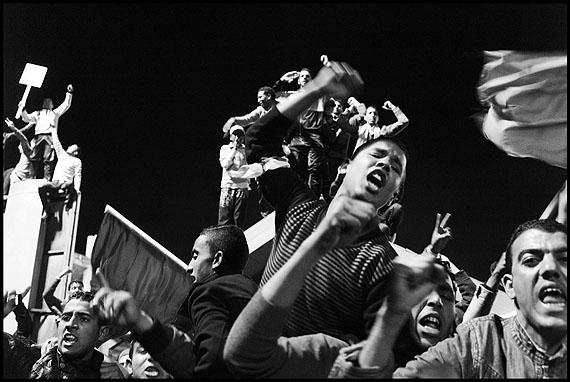
© Moises Saman/ /Magnum Photos
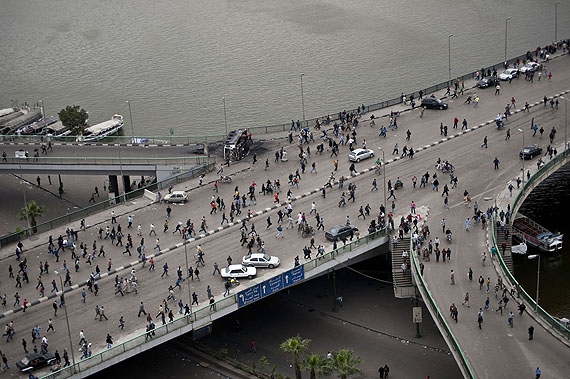
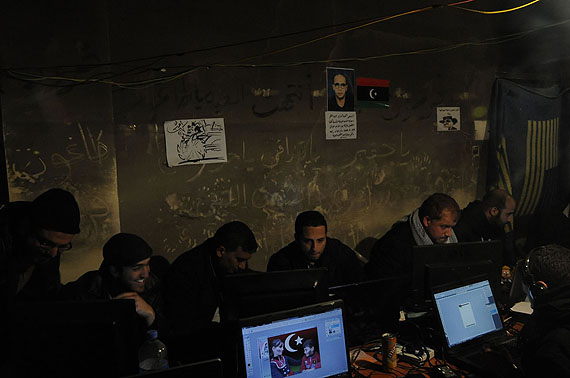
© Thomas Dworzak/Magnum Photos